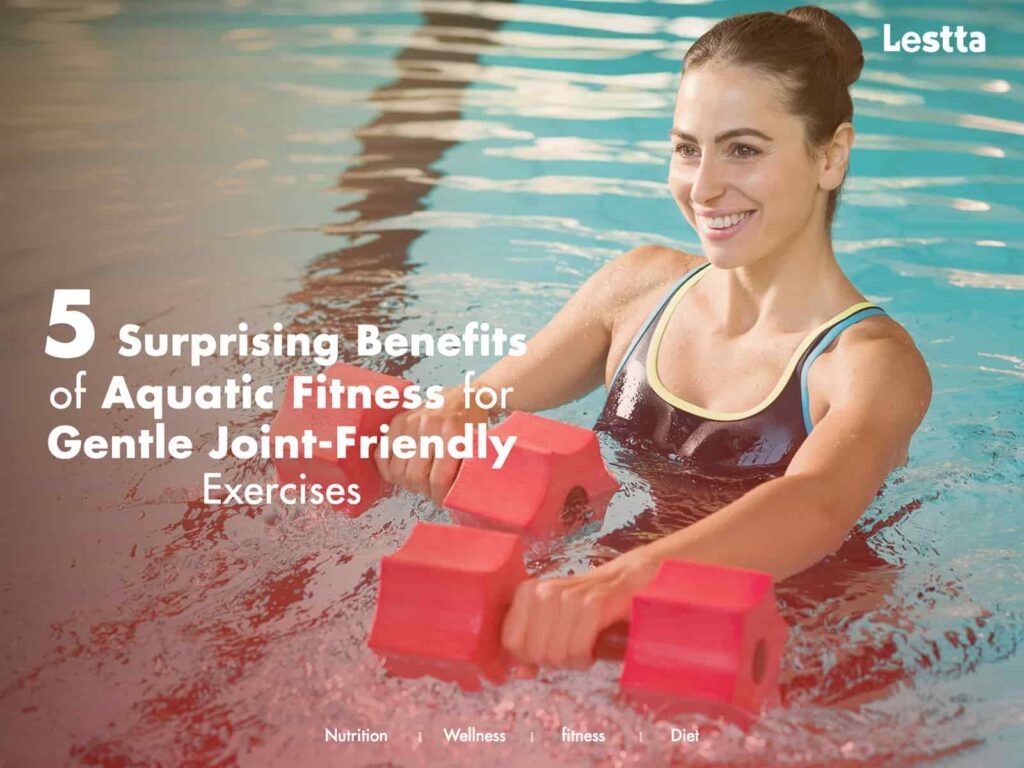
In recent years, aquatic fitness has gained popularity as a gentle and joint-friendly exercise option. Utilizing the buoyancy of water, this form of exercise offers numerous benefits for individuals of all ages and fitness levels. In this article, we will explore five surprising benefits of aquatic fitness and why it is an excellent choice for those seeking a low-impact workout. Let’s dive in!
1. Reduced Joint Impact

One of the primary reasons people turn to aquatic fitness is its low-impact nature. Water’s buoyancy significantly reduces the impact on joints, making it ideal for individuals with arthritis, joint pain, or other musculoskeletal issues.
As the body’s weight is supported by water, the stress on joints, such as knees and hips, is minimized, reducing the risk of injury and discomfort during exercise.
2. Enhanced Muscle Strength and Endurance

Contrary to the misconception that water workouts are less effective, aquatic fitness can provide an excellent full-body workout. The resistance of water challenges muscles, leading to improved strength and endurance.
Whether performing water aerobics, swimming, or resistance training, the constant resistance of water engages multiple muscle groups, resulting in toned muscles and increased overall fitness.
3. Improved Cardiovascular Health

Engaging in regular aquatic exercises can have a positive impact on cardiovascular health. Water-based activities elevate the heart rate, promoting better blood circulation and cardiovascular endurance.
Additionally, the hydrostatic pressure of water aids in blood flow, which can reduce swelling in the limbs and enhance heart function. The Benefits of Aquatic Fitness for Rehabilitation
4. Effective Rehabilitation

Aquatic fitness is widely recognized as an effective rehabilitation tool. For individuals recovering from injuries or surgeries, the buoyancy and resistance of water provide a controlled environment for gentle rehabilitation exercises.
Aquatic therapy can improve range of motion, balance, and muscle strength while minimizing stress on healing tissues.
5. Enhanced Flexibility and Balance

Flexibility and balance are crucial aspects of overall fitness, especially as we age. Aquatic fitness encourages movements that promote flexibility while the water’s instability challenges balance and proprioception.
Regular aquatic exercises can help improve flexibility, core strength, and stability, reducing the risk of falls and injuries.
Tips for Enjoying the Benefits of Aquatic Fitness
To make the most of your aquatic fitness experience and reap its benefits, consider the following tips:
- Seek Certified Instructors: Look for certified aquatic fitness instructors who can design safe and effective workout routines tailored to your needs and fitness level.
- Proper Warm-up: Start each session with a gentle warm-up to prepare your muscles and joints for the exercises ahead.
- Utilize Pool Equipment: Incorporate pool noodles, water dumbbells, or kickboards to add variety and resistance to your workouts.
- Listen to Your Body: Pay attention to your body’s cues and avoid overexertion. Gradually increase the intensity and duration of your workouts as you build strength and stamina.
Conclusion
Aquatic fitness offers a myriad of surprising benefits, making it an ideal choice for gentle joint-friendly exercises. Embrace the benefits of aquatic fitness and enjoy a rewarding, enjoyable, and effective way to improve your overall health and well-being.









